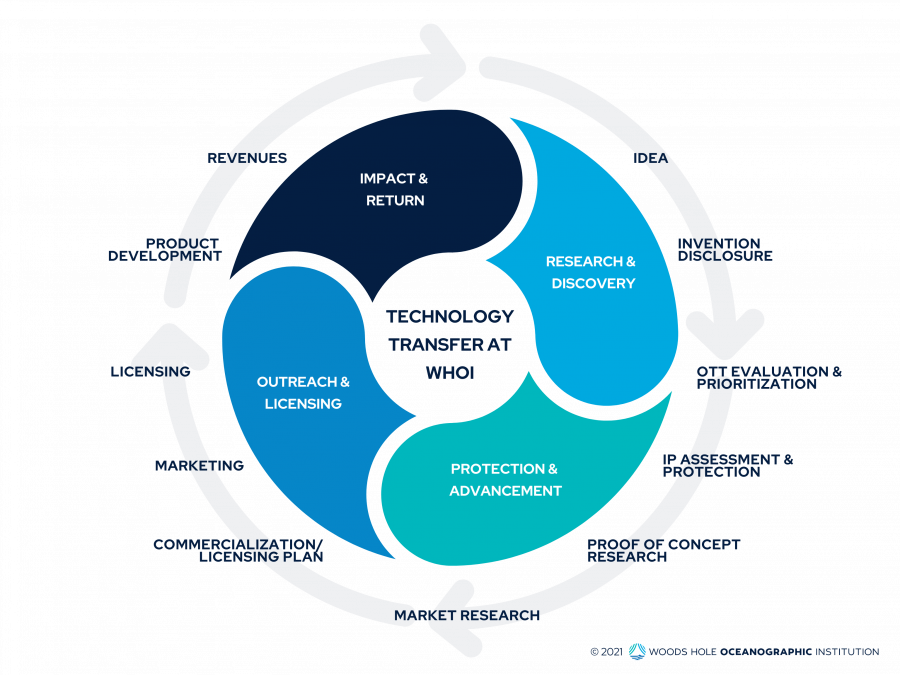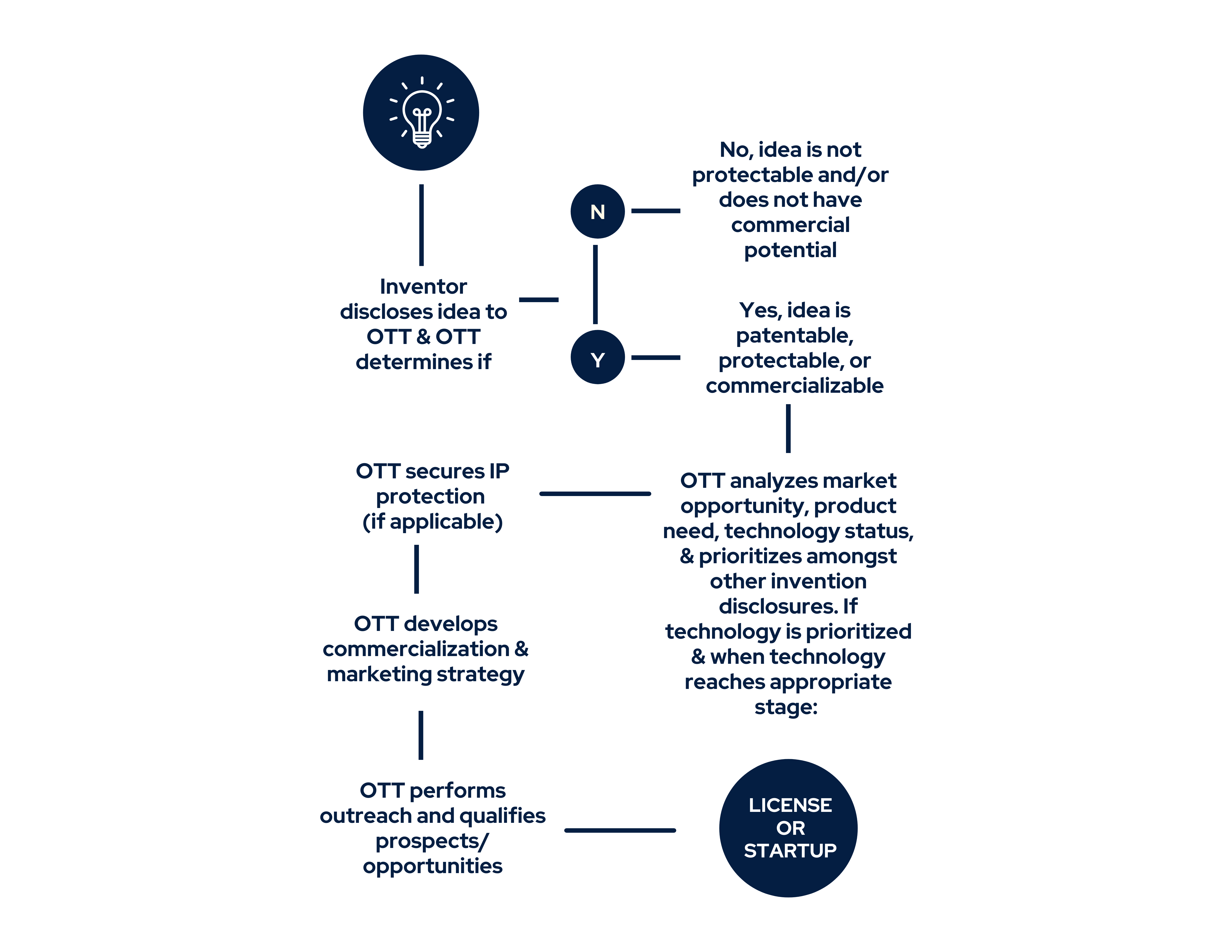We are here to help
Explore available services, learn about the disclosure process, and engage with the Office for Technology Transfer
Available Services
IP assessment, IP protection & patent filing
Forms & agreements (NDAs, MTAs. etc.)
WHOI start-up company support
IP & commercialization education & resources
Marketing, outreach, & licensing
Identification and coordination of translational funding sources for WHOI PIs (e.g., SBIR)
Guidance and support for WHOI PIs speaking with outside companies




